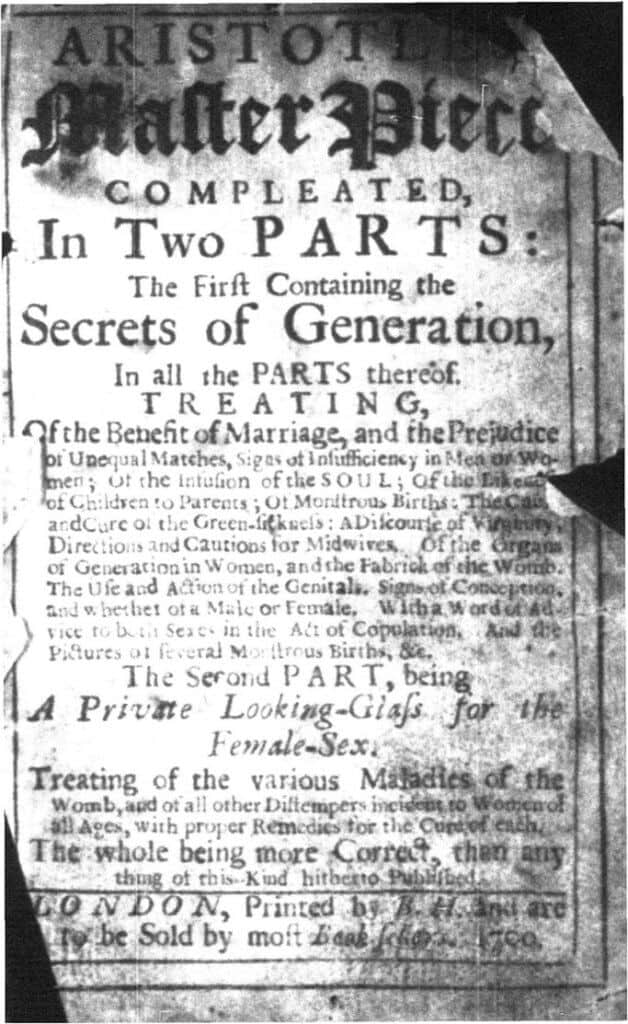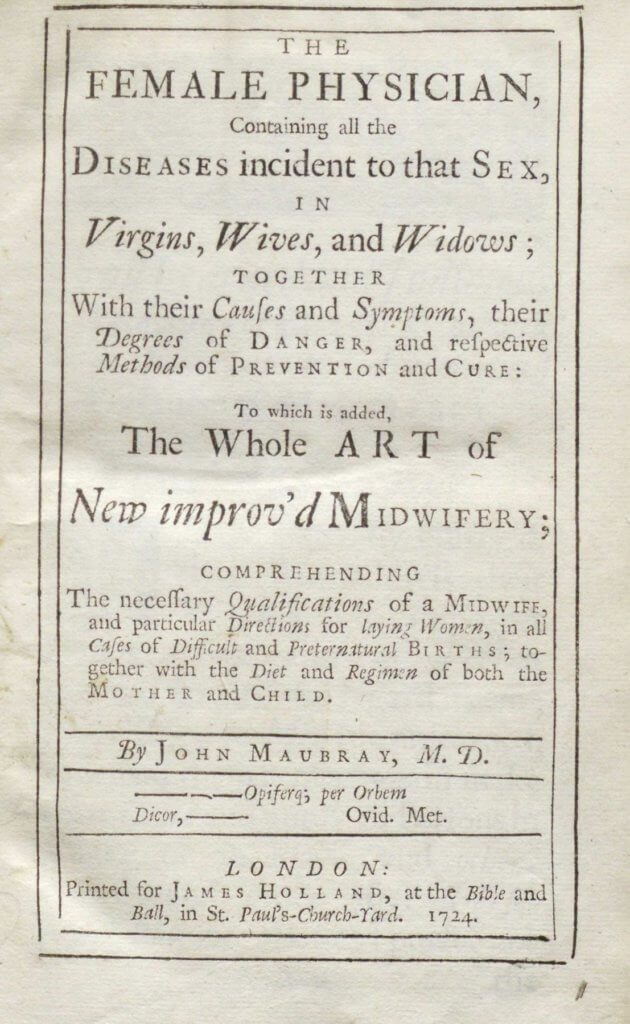

Let's Talk!
If you have questions about using Gale LibGuides or A-to-Z list import files, please feel free to reach out to Gale's Academic Outreach & Engagement team. We are happy to help you customize, copy, share and upload materials to your Institution's site.
 The early modern period saw the publication of new medical treatises written to address women’s health and medicine. Despite the low rates of literacy amongst most women of this period, privileged women often could read and were quite frequently the intended reader of such medical texts. Indeed, male authors commonly recommended that women educate themselves on the anatomy and bodily functions specific to their sex. One such example of this is Nicholas Sudell’s 1666 publication, Mulierum Amicus: or, The Woman’s Friend, addressed to ‘the Noble Ladies and Gentlewomen, Wives to the Right Worshipful Knights and Gentlemen’.
The early modern period saw the publication of new medical treatises written to address women’s health and medicine. Despite the low rates of literacy amongst most women of this period, privileged women often could read and were quite frequently the intended reader of such medical texts. Indeed, male authors commonly recommended that women educate themselves on the anatomy and bodily functions specific to their sex. One such example of this is Nicholas Sudell’s 1666 publication, Mulierum Amicus: or, The Woman’s Friend, addressed to ‘the Noble Ladies and Gentlewomen, Wives to the Right Worshipful Knights and Gentlemen’.
The areas of focus in treatises like Sudell’s were the female anatomy, and diseases specific to the female body such as ‘Inflammations… Cancer’ and conditions specific to women such as ‘Barrenness… Abortion or miscarriage’ and ‘Acute diseases of women in childbed’. Sudell is clear in the preface that his work is ‘not fit to be presented to all persons’, but that it should demonstrate that women and female conditions ‘stand distinct from man’. Sudell’s treatise intended to educate women and ‘further [their] knowledge’ as he demonstrates the common symptoms, causes and most importantly the treatments and medicines for a selection of ailments.
 The desire to teach women how to ‘compound medicines’ and how to apply remedies to other patients is reflective of the female role in early modern medicine: whilst men commonly occupied the role of physician, apothecary, or surgeon (and often held more than one role at once), women were dubbed "wise-women" or "cunning folk", and took on community-based, unorthodox roles. This meant that they would often pass along remedies orally and would have been more involved in the practice of medicine than written records would suggest.
The desire to teach women how to ‘compound medicines’ and how to apply remedies to other patients is reflective of the female role in early modern medicine: whilst men commonly occupied the role of physician, apothecary, or surgeon (and often held more than one role at once), women were dubbed "wise-women" or "cunning folk", and took on community-based, unorthodox roles. This meant that they would often pass along remedies orally and would have been more involved in the practice of medicine than written records would suggest.
Masterpiece Completed in Two Parts by a Pseudo-Aristotle (an unknown author falsely claiming to be Aristotle) from c. 1700 is taken from ‘Sex Research: Early Literature from Statistics to Erotica from the Kinsey Institute’, one of the three collections in Sex and Sexuality, Sixteenth to Twentieth Century. This collection, compiled in the twentieth century, consists of texts predominantly from the seventeenth to the twentieth centuries and aimed to review contemporary attitudes towards human sexuality, and how those attitudes altered over time.
In Masterpiece Completed in Two Parts, the author addresses the importance that women are able to recognize diseases specific to the female body for ‘they neither know from whence it proceeds, nor how to apply a Remedy’. Drawing on the authority of Cicero, Aristotle outlines that knowledge of female biology and medicine is paramount, since matters concerning the womb can have a fatal impact in the health of ‘the Heart, the Liver, and the Brain’.
At the heart of this treatise, like others of the period, the central concern is the female reproductive system, principally ‘the Womb… or Matrix’, understanding the ‘courses’ or menstruation, and the process of childbirth. The female anatomy was considered to be virtually identical to the male counterparts in the early modern period but was simply an imperfect version, dependent on the heat of the body: whilst the male anatomy was displayed outwardly as a result of the male body’s greater heat, the female equivalent was inverted within the body, since the female body was colder. The author also provides a detailed account in Chapter II of this treatise of how and when to perform copulation in order to create a male or female child, and how to achieve the ‘perfect Birth’. This, again is heavily dependent on the heat of the body, since ‘the heat of the Womb is greater in producing the Male than the Female’. This heat is a key component of the humoral theory of the body.
The foundations of medicine and bodily anatomy in early modern Europe were understood in terms of the humoral system, an ancient system developed by Galen. This relied on the balance of four biles within the body, each responsible for assigning different behavioural traits. An imbalance could result in disease or illness. For instance, an internal imbalance in favour of black bile could result in increased melancholy, whereas excess red bile, or blood, resulted in a sanguine temperament. This system, which provided the basis for early modern medicine, was understood explicitly in terms of gender, and gender differences; women were understood to contain predominantly wet and cold humors, compared to men who were dry and hot.
 Since the internal composition of men and women was different, their ailments should also be treated accordingly. John Maubray’s treatise, The female physician, containing all the diseases incident to that sex, details an ailment called ‘The Virgin-Disease’, which affects the function of the ‘Liver, Spleen, or Ventricle’ as a result of irregular menstruation. The main cause, however, is listed ‘a Collection of deprav’d crude Humours in the Body’. If left untreated ‘the Humours fly into the Head’ which ‘causes a Frenzy’.
Since the internal composition of men and women was different, their ailments should also be treated accordingly. John Maubray’s treatise, The female physician, containing all the diseases incident to that sex, details an ailment called ‘The Virgin-Disease’, which affects the function of the ‘Liver, Spleen, or Ventricle’ as a result of irregular menstruation. The main cause, however, is listed ‘a Collection of deprav’d crude Humours in the Body’. If left untreated ‘the Humours fly into the Head’ which ‘causes a Frenzy’.
‘The Virgin-Disease’ was clearly a significant ailment for early modern women, since this condition is also referenced as one of the first conditions in Sudell’s treatise mentioned above. Sudell lists paleness of the face and body, as well as the ‘Swelling face and Eye-lids’ amongst the symptoms. It was thought the key to curing this disease lay in clearing the obstructions in the bloodstream, through a series of purges and a concoction of herbal remedies such as ‘Salt of mugwort’ and ‘Conserve of red Roses’. Today, ‘The Virgin-Disease’, otherwise known as ‘Green-sickness’ or ‘the White feaver’, is understood as jaundice, but the assessment of such an illness in the early modern period was solely reliant on humoral theory.
Whilst the early modern period was undoubtedly transformative in terms of how women’s sexual and reproductive health was perceived within the general populace, the scholarship which facilitated this transformation was written almost exclusively by men. It would be centuries before women were able to claim any true autonomy over their bodies. Indeed, disputes surrounding bodily autonomy are still relevant today in debates on abortion rights, amongst other issues.
Gale’s Archives of Sexuality and Gender contains a whole host of documents which can be utilized to track the progression, not only of women’s health, but of other groups, topics and issues, right through to the twenty-first century.
The content of this LibGuide was adapted from the original author’s blog post which can be found here. Some of the author’s original words have been edited to accommodate general research inquiry related to the topic.
Gale is committed to helping students discover research insights to advance learning and research. Gale Ambassadors are students who work within their own university to increase awareness of the Gale primary source collections available to their fellow students. Our Ambassadors study a variety of different disciplines, and all are open to receiving thoughts or questions from other students at their university about Gale Primary Sources.